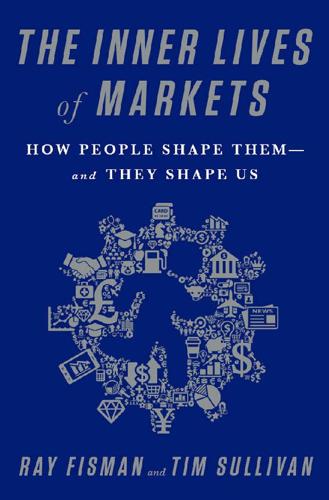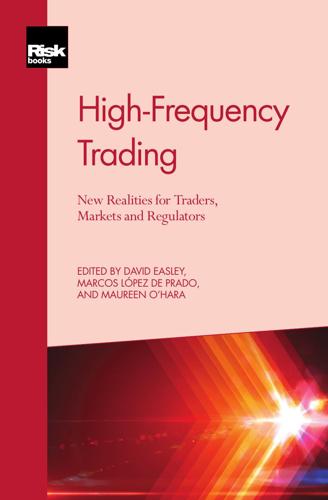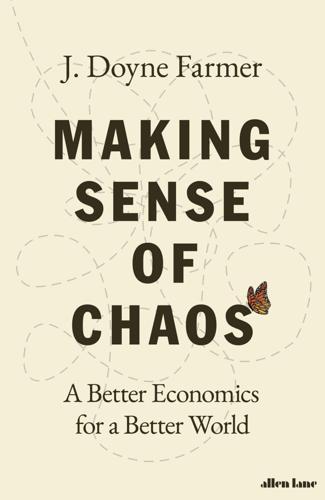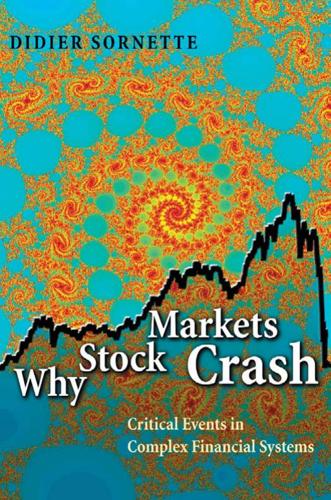
Topics in Market Microstructure
by
Ilija I. Zovko
Published 1 Nov 2008
In this screen the traders are displayed, among some general stock information such as the previous day closing price and volume, also the current best bid and ask prices and volumes and also up to 5 levels of bid and ask limit orders in the limit order book. 3 CHAPTER 1. INTRODUCTION Once the opening auction is over, the market enters the continuous double auction phase. The possible uncleared orders from the auction are transfered to the order book. The continuous double auction is the main trading phase of the market. Traders may continuously submit orders to buy or sell and possible trades are cleared instantly. The main two types of orders are limit orders and market orders. A sell (buy) limit order is an offer to sell (buy) a specific amount of shares at a specified price or higher (lower).
…
This is in contrast to papers testing standard models based on rationality, which are typically forced to add strong auxiliary assumptions not contained in the original theoretical model, making the final results essentially qualitative. We present a brief review in the Supplementary Material (SM), Section 3.5.1. 3.1.1 Continuous double auction The continuous double auction is the most widely used method of price formation in modern financial markets. The auction is called “double” because traders can submit orders both to buy and to sell and it is called “continuous” because they can do so at any time. Under the terminology we use here, an order that does not cross the opposite best price, and so does not result in an immediate transaction, is called a limit order.
…
iv Contents 1 Introduction 1.1 The London Stock Exchange and the 1.1.1 Trading day . . . . . . . . . . 1.1.2 Member firms . . . . . . . . . 1.1.3 The LSE dataset, preparation 1.2 Summary of chapters . . . . . . . . . . . . . . 1 2 2 4 5 6 2 The power of patience: A behavioral regularity in limit order placement 2.1 Introduction . . . . . . . . . . . . . . . . . . . . . . . . 2.2 Description of the London Stock Exchange data . . . . 2.3 Properties of relative limit order prices . . . . . . . . . 2.3.1 Unconditional distribution . . . . . . . . . . . . 2.3.2 Time series properties . . . . . . . . . . . . . . 2.4 Volatility clustering . . . . . . . . . . . . . . . . . . . . 2.5 Conclusion . . . . . . . . . . . . . . . . . . . . . . . . 9 9 11 12 12 15 17 19 3 The predictive power of zero intelligence in financial markets 3.1 Introduction . . . . . . . . . . . . . . . . . . . . . . . . 3.1.1 Continuous double auction . . . . . . . . . . . 3.1.2 Review of the model . . . . . . . . . . . . . . . 3.1.3 Predictions of the model . . . . . . . . . . . . . 3.2 Testing the scaling laws . . . . . . . . . . . . . . . . . 3.2.1 Data . . . . . . . . . . . . . . . . . . . . . . . . 3.2.2 Testing procedure . . . . . . . . . . . . . . . . 3.2.3 Spread . . . . . . . . . . . . . . . . . . . . . . . 3.2.4 Price diffusion rate . . . . . . . . . . . . . . . . 3.3 Average market impact . . . . . . . . . . . . . . . . . 3.4 Conclusions . . . . . . . . . . . . . . . . . . . . . . . . 21 21 22 24 25 26 26 27 28 28 29 34 v LSE data . . . . . . . . . . . . . . . . . . and cleaning . . . . . . . . . . . . .

The Inner Lives of Markets: How People Shape Them—And They Shape Us
by
Tim Sullivan
Published 6 Jun 2016
They existed back in the fifth century BC, when Roman historian Herodotus describes descending price auctions (where the price starts high and is gradually lowered until a bidder jumps in to purchase the item) as the mechanism of choice for marrying off young well-to-do Babylonian women. (Descending price auctions are still in use today to sell flowers in Holland; as a result, they’re called Dutch auctions.) Auctioneers have experimented with all sorts of different rules and protocols over the centuries. There are Japanese auctions, reverse auctions, double auctions, continuous double auctions, Yankee auctions. In a Scottish (or time-interval) auction, all bidding must close within a prespecified time period. In seventeenth-century England, a variant on the Scottish auction was used where the time of the auction’s close was uncertain, dictated by the exact moment when a candle of, say, an inch in length burned out (“candle” auctions are still used to sell wine in France and for government procurement contracts in Brazil).

High-Frequency Trading
by
David Easley
,
Marcos López de Prado
and
Maureen O'Hara
Published 28 Sep 2013
That being said, what we have covered in this section is a framework for how to look for sources of potential profits in a principled way (by defining state spaces, examining potential features and their interplay, using training-test set methodology, imposing sensible value functions, etc) that should be a part of the arsenal of a quantitative professional, so that we can at least discuss these problems in a common language. MACHINE LEARNING FOR SMART ORDER ROUTING IN DARK POOLS The studies we have examined so far apply machine learning to trading problems arising in relatively long-standing exchanges (the open limit order book instantiation of a continuous double auction), where microstructure data has been available for some time. Furthermore, this data is rich, showing the orders and executions for essentially all market participants, comprising multiple order types, etc, and is also extremely voluminous. In this sense these exchanges and data are ideal test beds for machine learning for trading, since (as we have seen) they permit the creation of rich feature spaces for state-based learning approaches.

Making Sense of Chaos: A Better Economics for a Better World
by
J. Doyne Farmer
Published 24 Apr 2024
‘Shocks and Frictions in US Business Cycles: A Bayesian DSGE Approach’. American Economic Review 97 (3): 586–606, doi: 10.1257/aer.97.3.586. Smith, Adam. 1776. The Wealth of Nations. London: W. Strahan & T. Cadell. Smith, Eric, J. Doyne Farmer, László Gillemot and S. Krishnamurthy. 2002. ‘Statistical Theory of the Continuous Double Auction’. Quantitative Finance 3 (6): 481–514, doi: 10.1088/1469-7688/3/6/307. Smith, V.L. 1962. ‘An Experimental Study of Competitive Market Behavior’. Journal of Political Economy 70 (2): 111–137. Smith, Vernon. 2008. Rationality in Economics: Constructivist and Ecological Forms. New York: Cambridge University Press.

Why Stock Markets Crash: Critical Events in Complex Financial Systems
by
Didier Sornette
Published 18 Nov 2002
Hundreds of experiments on artificial markets constructed and performed with students from economics classes and with professionals have shown the crucial importance of repeating interactions in the presence of unconscious decisions in order to lead to an apparent rationality in rule-governed problems [390]. In these socalled continuous double auction experiments, which attempt to mimick real market situations, subjects have private information on their own willingness-to-pay or willingness-to-accept schedules which bound the prices at which each can profitably trade. No subject has information on market supply and demand. After an experiment, upon interrogation, the participants deny that they could have maximized their monetary earnings or that their trading results could be predicted by a theory.